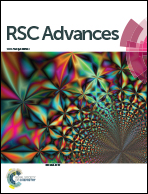Chondrocytes behaviors within type I collagen microspheres and bulk hydrogels: an in vitro study
Abstract
Cell niche, which is considered to be critical to the proliferation and differentiation of cells, is one of the most important aspects for the design and development of ideal scaffolds in tissue engineering. The mass transfer property of the scaffold affects the nutrient supply and exchange of the other substances. In this study, we prepared collagen hydrogels in the form of microspheres (CHMs) and bulk (CHB) to investigate the mass exchange differences and their influence on embedded chondrocytes. CHMs were developed by the emulsion method, which was efficient to load cells. Bovine serum albumin (BSA) was used as a diffusion model in the CHMs and CHB to evaluate the transport property of the hydrogels and the release kinetics. During the 4 week in vitro culture process, the contraction of the hydrogels, the cell viability and morphology, and the DNA and glycosaminoglycan (GAG) content were monitored at different intervals. The results suggested that the CHMs showed an obvious superiority in the transfer property over the CHB, leading to better maintenance of the chondrocyte phenotype in CHMs at the early stage of the in vitro culture. Histological analyses indicated that lots of lacunae and homogeneous positive GAG staining appeared in the CHMs from day 7. In contrast, only a few lacunae and obscure GAG staining were found in the outer area of the CHB after day 21. Without enough nutrients, the chondrocytes in the inner area of the CHB had little secreted matrix. Based on the presented CHM system, a further developed construct is suggested as a promising alternative toward the clinical application of engineered cartilaginous tissue.


 Please wait while we load your content...
Please wait while we load your content...